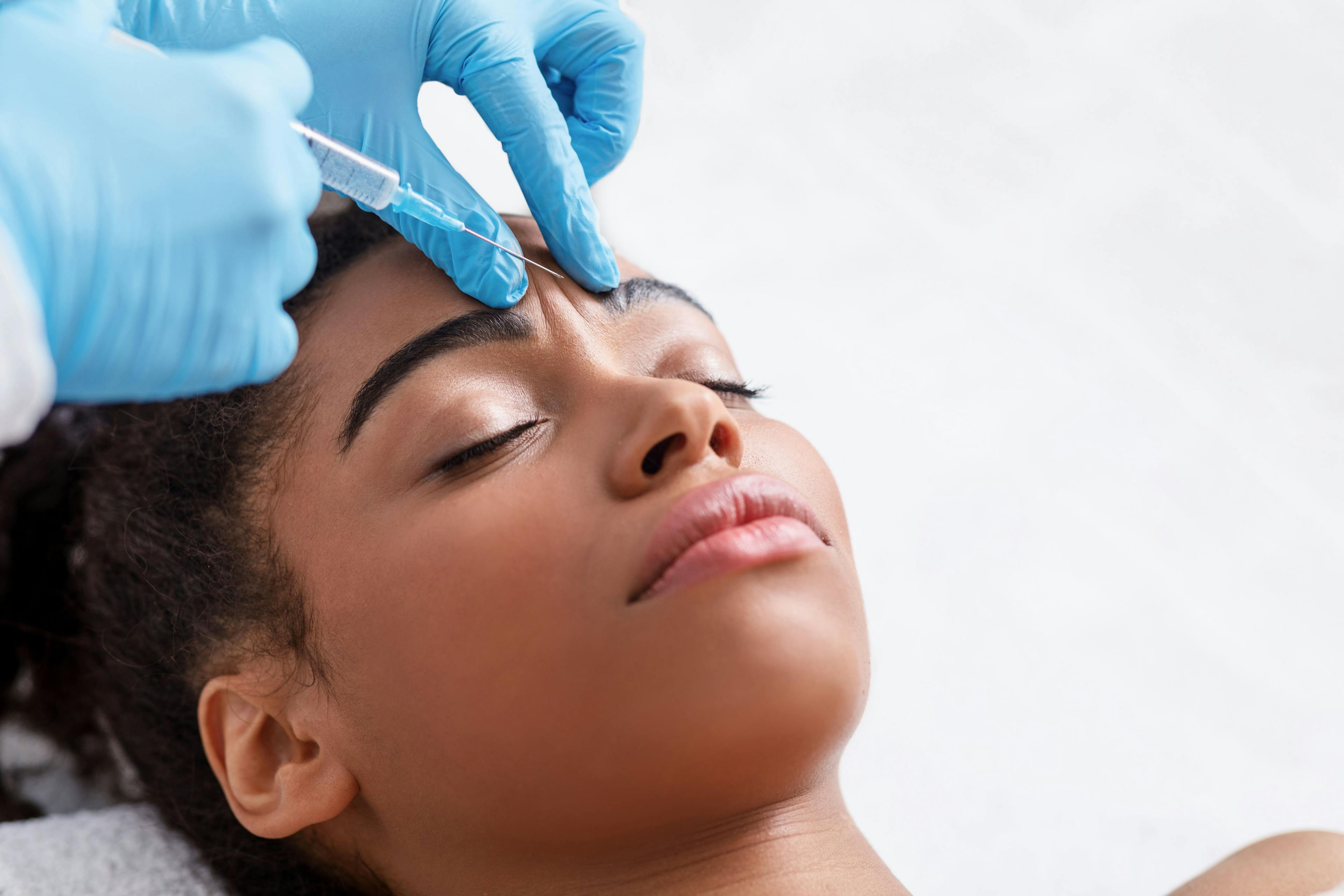- Acne
- Actinic Keratosis
- Aesthetics
- Alopecia
- Atopic Dermatitis
- Buy-and-Bill
- COVID-19
- Case-Based Roundtable
- Chronic Hand Eczema
- Chronic Spontaneous Urticaria
- Drug Watch
- Eczema
- General Dermatology
- Hidradenitis Suppurativa
- Melasma
- NP and PA
- Pediatric Dermatology
- Pigmentary Disorders
- Practice Management
- Precision Medicine and Biologics
- Prurigo Nodularis
- Psoriasis
- Psoriatic Arthritis
- Rare Disease
- Rosacea
- Skin Cancer
- Vitiligo
- Wound Care
News
Article
Dermatology Times
Journal Digest: August 5
Author(s):
This week’s collection of the latest dermatologic studies includes oral dutasteride for frontal fibrosing alopecia, effects of air pollutants for patients with acne, bimekizumab in patients with PsA without methotrexate, and itepekimab for adults with moderate to severe AD.

Journal of the European Academy of Dermatology & Venereology: Oral Dutasteride is a First-Line Treatment for Frontal Fibrosing Alopecia
According to Vano-Galvan and Saceda-Corralo, frontal fibrosing alopecia (FFA) is a leading cause of cicatricial alopecia, with a poorly understood pathogenesis potentially involving genetic and environmental factors, including xenobiotic estrogens. FFA presents a therapeutic challenge due to the lack of double-blind randomized controlled trials supporting specific treatments. Various anti-inflammatory therapies have been evaluated, such as hydroxychloroquine, steroids, calcineurin inhibitors, and JAK inhibitors. The primary treatment goal is to stabilize the disease and prevent alopecia progression. Oral dutasteride has shown the highest efficacy, with a 62.8% stabilization rate in a meta-analysis of 7 studies involving 366 patients. Dutasteride's antifibrotic properties, hormonal modulation, and immunomodulatory effects are hypothesized to contribute to its effectiveness. The study authors concluded that despite being off-label, oral dutasteride remains a first-line treatment for FFA due to its strong efficacy and good safety profile, and it can be combined with other treatments if needed.1
Journal of Cosmetic Dermatology: Non-Linear Association Between Air Pollutants and Secondary Sensitive Skin in Acne Patients
Due to acne’s significant impact on quality of life from sequelae such as erythema, pigmentation, and scarring, Chen et al conducted a cross-sectional study evaluating 4325 patients with acne from 7 major regions in China. According to the study authors, recent studies indicate a rise in patients with acne with secondary sensitive skin, characterized by symptoms like burning, stinging, and itching. This study used the XGBoost machine learning method to explore the relationship between air pollutants, individual factors, and secondary sensitive skin in acne. Results showed a 33.6% prevalence of secondary sensitive skin among patients with acne, with significant gender disparities. Air pollutants like PM2.5, PM10, NO2, SO2, O3, and CO were found to influence secondary sensitivity. Other factors, such as exercise intensity, sunscreen use, acne severity, and depression, also played roles. According to Chen et al, their study highlights the need for preventive strategies focusing on air pollutant control, emotional regulation, and lifestyle improvements to mitigate secondary sensitive skin in patients with acne.2
American College of Rheumatology: Efficacy and Safety of Bimekizumab in Patients With Psoriatic Arthritis With or Without Methotrexate: 52-Week Results From Two Phase 3 Studies
McInnes et al’s post-hoc analysis evaluated the efficacy and safety of bimekizumab for the treatment of psoriatic arthritis (PsA) over 52 weeks, with a focus on the impact of concomitant methotrexate (MTX) usage. Two phase 3 trials, BE OPTIMAL (NCT03895203) and BE COMPLETE (NCT03896581), assessed bimekizumab in bDMARD-naïve and TNFi-IR patients, respectively. The results showed that bimekizumab maintained consistent and significant improvements across various PsA domains, such as joints and skin, regardless of MTX co-administration. Efficacy was similar in both +MTX and −MTX groups, suggesting that MTX is not necessary to sustain bimekizumab's therapeutic effects. Safety profiles were comparable between groups, although MTX users showed a higher incidence of liver enzyme elevations. According to the study authors, their results suggest that bimekizumab alone may be sufficient for managing PsA, potentially reducing the need for MTX and its associated monitoring and adverse effects.3
Clinical and Translational Science: Pharmacokinetics and Pharmacodynamics of Itepekimab in Adults With Moderate-to-severe Atopic Dermatitis: Results from Two Terminated Phase II Trials
Kosloski et al investigated the pharmacokinetics, pharmacodynamics, and safety of itepekimab, an anti-IL-33 monoclonal antibody, in patients with moderate to severe atopic dermatitis (AD). Despite the potential of IL-33 in AD pathology, 2 global phase 2 studies—a dose-ranging itepekimab monotherapy study (NCT03738423) and a proof-of-concept study of itepekimab alone and in combination with dupilumab (NCT03736967) — found that itepekimab, whether administered alone or in combination with dupilumab, did not demonstrate significant efficacy compared to placebo. Both trials were terminated due to lack of efficacy, with no observed incremental benefit from dual therapy with dupilumab. Itepekimab was well-tolerated, with a safety profile consistent with previous studies. Although itepekimab administration led to increases in serum IL-33 levels and reductions in blood eosinophils, the pharmacodynamic changes did not translate into significant clinical improvements in AD symptoms.4
What new studies have you published? Share with us by emailing DTEditor@mmhgroup.com for an opportunity to be featured.
References
- Vano-Galvan S, Saceda-Corralo D. Oral dutasteride is a first-line treatment for frontal fibrosing alopecia. J Eur Acad Dermatol Venereol. 2024;38(8):1455-1456. doi:10.1111/jdv.20174
- Chen X, Wen J, Wu W, et al. Non-linear association between air pollutants and secondary sensitive skin in acne patients. J Cosmet Dermatol. Published online July 26, 2024. doi:10.1111/jocd.16487
- McInnes IB, Mease PJ, Tanaka Y, et al. Efficacy and safety of bimekizumab in patients with psoriatic arthritis with or without methotrexate: 52-week results from two phase 3 studies. ACR Open Rheumatol. Published online July 30, 2024. doi:10.1002/acr2.11727
- Kosloski MP, Guttman-Yassky E, Cork MJ, et al. Pharmacokinetics and pharmacodynamics of itepekimab in adults with moderate-to-severe atopic dermatitis: Results from two terminated phase II trials. Clin Transl Sci. 2024;17(8):e13874. doi:10.1111/cts.13874

Newsletter
Like what you’re reading? Subscribe to Dermatology Times for weekly updates on therapies, innovations, and real-world practice tips.

























